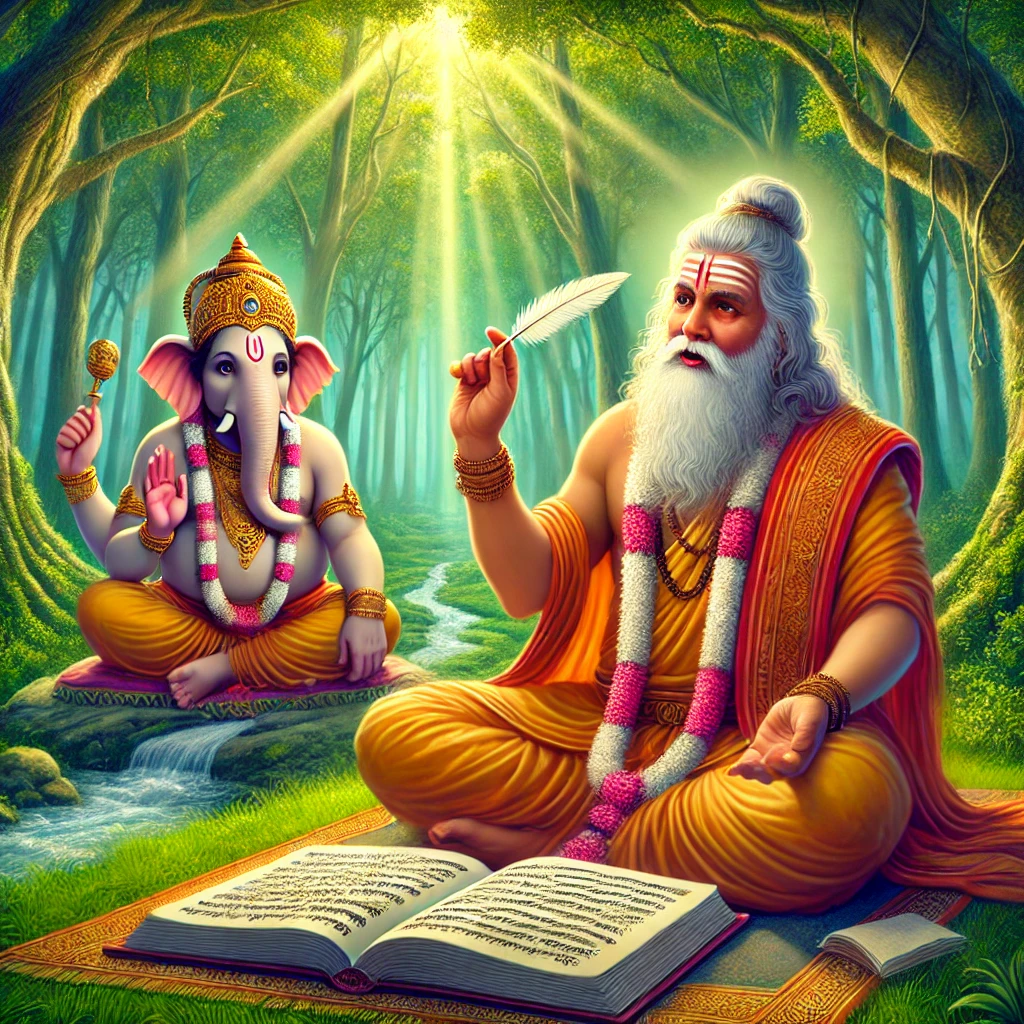Bhagavad Gita is recited by Maharishi Ved Vyas, also known as Krishna Dvaipayana, and written by Lord Ganesha.
As per the Bhagavat Purana or Srimad Bhagavatam, Maharishi Ved Vyas is the 17th incarnation of Lord Vishnu who has come to divide Vedas into several branches for common people.

Some Facts About The Bhagavad Gita:
- It is a part of The Great Epic – Mahabharata.
- It comes in the “Bhisma Parva” of Mahabharata.
- It is a dialogue between Lord Krishna and Arjuna just before the start of the Mahabharata war.
- Despite being included in itihaas (history) of Indian scriptures, it is also called “Gitopanishad”.
- It is a philosophical discussion that explains karma yoga, jyana yoga, sankya yoga, dhyana yoga, and bhakti yoga.
- It is spoken to Dhritrastra (father of Kauravas) when he enquired about the war from Sanjaya.
- It contains 700 verses distributed among 18 chapters.
- Great scholars and saints have written commentaries on the Bhagavad Gita making it the most read text in the world.
Content of Bhagavad Gita:
From a broader perspective, Bhagavad Gita explains the three ways to attain liberation.
- Karma Yoga (Chapters 1-6)
- Bhakti Yoga (Chapters 7-12)
- Gyaan Yoga (Chapters 13-18)
This is told by Lord Krishna in the Bhagavat Puran (Canto 11, Chapter 20, Verse 6 ) that he described 3 paths for liberation to humanity.
श्रीभगवानुवाच
योगास्त्रयो मया प्रोक्ता नृणां श्रेयोविधित्सया ।
ज्ञानं कर्म च भक्तिश्च नोपायोऽन्योऽस्ति कुत्रचित् ॥ ६ ॥
Translation: Lord Krishna said: I have presented three paths of advancement for human beings to achieve perfection — Gyaan, Karma, and Bhakti. Besides these three there is no other means of elevation.
With over three years of dedicated experience in studying and researching Indian scriptures, the author is passionate about sharing the profound wisdom of texts like the Bhagavad Gita, Puranas, and Upanishads. Through in-depth exploration of authentic commentaries, such as those by Gita Press, combined with thoughtful online research, the insights provided are both accurate and engaging.
The content aims to simplify complex spiritual teachings, making them relatable and applicable to modern life. By bridging ancient wisdom with contemporary understanding, the author seeks to inspire readers on their journey toward spiritual growth and self-discovery.



